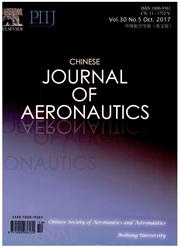

 中文摘要:
中文摘要:
The tip leakage flow has an important influence on the performance of transonic compressor.Blade tip winglet has been proved to be an effective method to control the tip leakage flow in compressor,while the physical mechanisms of blade tip winglet have been poorly understood.A numerical study for a highly loaded transonic compressor rotor has been conducted to understand the effect of varying the location of blade tip winglet on the performance of the rotor.Two kinds of tip winglet were designed and investigated.The effects of blade tip winglet on the compressor overall performance,stability and tip flow structure were presented and discussed.It is found that the interaction of the tip winglet with the flow in the tip region is different when the winglet is located at suction-side or pressure-side of the blade tip.Results indicate that the suction-side winglet(SW) is ineffective to improve the performance of compressor rotor.In addition,a significant stall range extension equivalent to 33.74% with a very small penalty in efficiency can be obtained by the pressure-side winglet(PW).An attempt has been made to explain the fundamental mechanisms of blade tip winglet in detail.
 英文摘要:
英文摘要:
The tip leakage flow has an important influence on the performance of transonic com- pressor. Blade tip winglet has been proved to be an effective method to control the tip leakage flow in compressor, while the physical mechanisms of blade tip winglet have been poorly understood. A numerical study for a highly loaded transonic compressor rotor has been conducted to understand the effect of varying the location of blade tip wing]et on the performance of the rotor. Two kinds of tip winglet were designed and investigated. The effects of blade tip winglet on the compressor over- all performance, stability and tip flow structure were presented and discussed, It is found that the interaction of the tip winglet with the flow in the tip region is different when the winglet is located at suction-side or pressure-side of the blade tip. Results indicate that the suction-side winglet (SW) is ineffective to improve the performance of compressor rotor. In addition, a significant stall range extension equivalent to 33.74% with a very small penalty in efficiency can be obtained by the pressure-side winglet (PW). An attempt has been made to explain the fundamental mechanisms of blade tip winglet in detail.
 同期刊论文项目
同期刊论文项目
 同项目期刊论文
同项目期刊论文
 期刊信息
期刊信息
